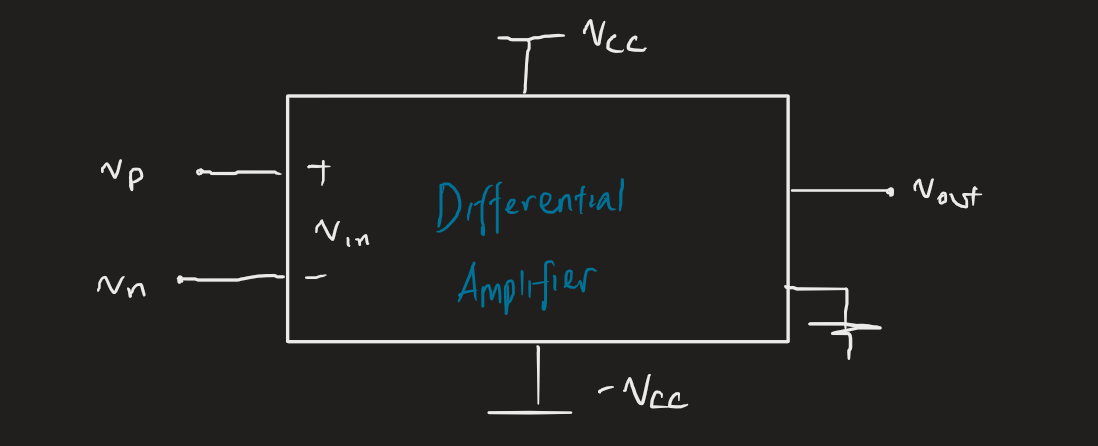In electronics, amplifiers are circuits that take an input signal, and outputs the signal with an increased magnitude. Amplifiers can be implemented in many ways, notably with transistors or operational amplifiers.
Basic characteristics
The gain () of an amplifier is a parameter or function that multiplies with the input signal to yield the output signal. More on this later. Unilateral amplifier circuits don’t contain any internal feedback.
Amplifiers commonly have two supply rails, and , and a ground rail. In practice, the voltage in amplifiers don’t go above or below the supply values.

We say that the behaviour is linear within the supply range. At the peaks, it saturates as the output voltage approaches the supply rail values, so we have two “modes”, a linear mode and a saturation mode.
Parameters
Amplifiers should be considered distinct circuit blocks, so there are several parameters we should consider in our study.
The input resistance represents the loading effect of the amplifier input on the signal source. For unilateral circuits (many transistor amplifiers), does not depend on . The emitter follower amplifier is an example of one where it is dependent.
The open-circuit voltage gain is where there is no (or alternatively the resistance is infinite):
The output resistance is seen looking into the amplifier output terminal with .
The voltage gain (of the amplifier itself) is given by:
The overall voltage gain (of the circuit, not just the amplifier) is given by:
The short-circuit transconductance of the amplifier is given by:
Differential amplifier
A useful type of amplifier is the differential amplifier, which amplifies the difference between two applied voltages .

These see wide use because they are able to eliminate noise. One key type of differential amplifier is the op amp.